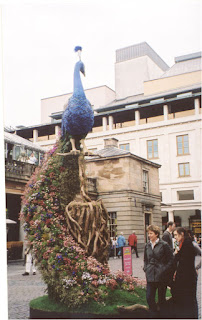 | ||
| The "grandgirls" - Hailey, Cassidy, Riley, Christmas 2012 |
 |
| Look, Mom, it's snowing! |
 | |
| Road Trip - Gatlinburg, Tennessee, December 26, 2012 - a LONG drive to see snow! |
UPDATED INDEX
to Grace's Writing & Editing Blogs
to Grace's Writing & Editing Blogs
2011:
The Writing 101 series
1. Formatting a Manuscript - May 9, 2011
2. Nuts & Bolts, Part 1(grammar, punctuation) - May 16, 2011
3. Tab conversion (from manual to auto) - June 5, 2011
4. Nuts & Bolts, Part 2 - June 16, 2011
5. I Ran Spell Check, I'm Done, Right? (self-editing) - July 5, 2011
6. The Final Steps (self-editing) - July 14, 2011
2012:
EDIT THE BLASTED BOOK series
1. Intro to Self-editing - April 1, 2012
2. Should you hire help? - April 28, 2012
3. Manuscript Format for the 21st Century - May 6, 2012
4. Writing No-No's - May 28, 2012
5. Point of View - June 18, 2012
6. Anatomy of an Edit, Part 1 - August 5, 2012
7. Anatomy of an Edit, Part 2 - August 19, 2012
HOW TO DEVELOP YOUR CHARACTERS series
Part 1 - What you need to discover about your characters - October 15, 2012
Part 2 - More questions about your characters - October 29, 2012
Part 3 - The Rest of the story - November 5, 2012
Miscellaneous:
1. Guideposts for Critiquing - January 28, 2011
2. Writing Mistakes, Near Misses & Just Plain Strange - March 4, 2011
3. Shortcuts for Writers (ASCII codes) - March 18, 2011
4. Rules for Romance - September 18, 2011
5. More Rules for Romance - October 16, 2011
6. How Not to Write a Book - December 20, 2012
Aaron Pogue. Evidently, Mr. Pogue thought he was writing Young Adult - hence the third book in his Dragonprince trilogy, The Dragonprince's Heir, with a fourteen-year-old hero of the next generation. However, from the notes at the end of the e-version of this book, I believe he's finally realized he reached a much wider audience and plans to fill in the "gap" years between Books 2 & 3. The triology is highly sensitive, imaginative, and heart-wrenching, delving into nearly everything from warcraft and magic to insanity and politics.
Grace's Archives.
The Archive menu to the right of the screen should allow you to find the articles you want. I'd very much appreciate hearing which topics you found most helpful. Questions and suggestions for future posts are also welcome.
Thanks for stopping by.
Grace (who writes as Blair Bancroft)
For Blair's website, click here.
3. Tab conversion (from manual to auto) - June 5, 2011
4. Nuts & Bolts, Part 2 - June 16, 2011
5. I Ran Spell Check, I'm Done, Right? (self-editing) - July 5, 2011
6. The Final Steps (self-editing) - July 14, 2011
2012:
EDIT THE BLASTED BOOK series
1. Intro to Self-editing - April 1, 2012
2. Should you hire help? - April 28, 2012
3. Manuscript Format for the 21st Century - May 6, 2012
4. Writing No-No's - May 28, 2012
5. Point of View - June 18, 2012
6. Anatomy of an Edit, Part 1 - August 5, 2012
7. Anatomy of an Edit, Part 2 - August 19, 2012
HOW TO DEVELOP YOUR CHARACTERS series
Part 1 - What you need to discover about your characters - October 15, 2012
Part 2 - More questions about your characters - October 29, 2012
Part 3 - The Rest of the story - November 5, 2012
Miscellaneous:
1. Guideposts for Critiquing - January 28, 2011
2. Writing Mistakes, Near Misses & Just Plain Strange - March 4, 2011
3. Shortcuts for Writers (ASCII codes) - March 18, 2011
4. Rules for Romance - September 18, 2011
5. More Rules for Romance - October 16, 2011
6. How Not to Write a Book - December 20, 2012
UPDATE TO "WHAT GRACE READS"
Original post - September 9, 2012
Aaron Pogue. Evidently, Mr. Pogue thought he was writing Young Adult - hence the third book in his Dragonprince trilogy, The Dragonprince's Heir, with a fourteen-year-old hero of the next generation. However, from the notes at the end of the e-version of this book, I believe he's finally realized he reached a much wider audience and plans to fill in the "gap" years between Books 2 & 3. The triology is highly sensitive, imaginative, and heart-wrenching, delving into nearly everything from warcraft and magic to insanity and politics.
Grace's Archives.
The Archive menu to the right of the screen should allow you to find the articles you want. I'd very much appreciate hearing which topics you found most helpful. Questions and suggestions for future posts are also welcome.
Thanks for stopping by.
Grace (who writes as Blair Bancroft)
For Blair's website, click here.


























